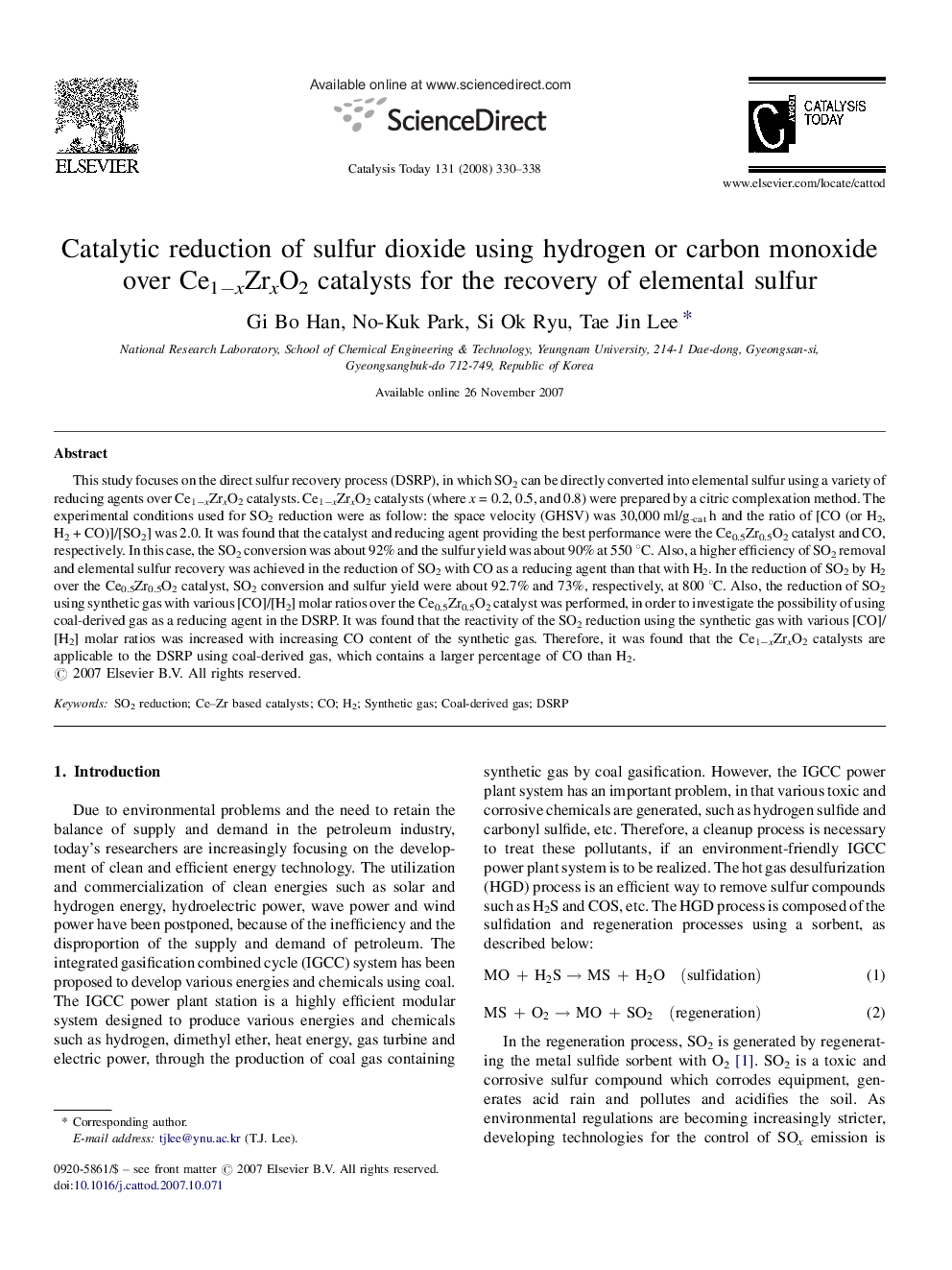| Article ID | Journal | Published Year | Pages | File Type |
|---|---|---|---|---|
| 57696 | Catalysis Today | 2008 | 9 Pages |
This study focuses on the direct sulfur recovery process (DSRP), in which SO2 can be directly converted into elemental sulfur using a variety of reducing agents over Ce1−xZrxO2 catalysts. Ce1−xZrxO2 catalysts (where x = 0.2, 0.5, and 0.8) were prepared by a citric complexation method. The experimental conditions used for SO2 reduction were as follow: the space velocity (GHSV) was 30,000 ml/g-cat h and the ratio of [CO (or H2, H2 + CO)]/[SO2] was 2.0. It was found that the catalyst and reducing agent providing the best performance were the Ce0.5Zr0.5O2 catalyst and CO, respectively. In this case, the SO2 conversion was about 92% and the sulfur yield was about 90% at 550 °C. Also, a higher efficiency of SO2 removal and elemental sulfur recovery was achieved in the reduction of SO2 with CO as a reducing agent than that with H2. In the reduction of SO2 by H2 over the Ce0.5Zr0.5O2 catalyst, SO2 conversion and sulfur yield were about 92.7% and 73%, respectively, at 800 °C. Also, the reduction of SO2 using synthetic gas with various [CO]/[H2] molar ratios over the Ce0.5Zr0.5O2 catalyst was performed, in order to investigate the possibility of using coal-derived gas as a reducing agent in the DSRP. It was found that the reactivity of the SO2 reduction using the synthetic gas with various [CO]/[H2] molar ratios was increased with increasing CO content of the synthetic gas. Therefore, it was found that the Ce1−xZrxO2 catalysts are applicable to the DSRP using coal-derived gas, which contains a larger percentage of CO than H2.
